Lately various businesses demand the tea specialized to a specific purpose. For example, the bottled cold-brewed tea is used in some particular occasions such as specialty beverage without alcohol in the business class of airline like Royal Blue Tea as posted before. A furniture company built a tea cafe inside the retail store to let customers imagine how to use furniture in their lifestyle with tea, as posted before. In addition to these businesses, culinary businesses seem to get more interested in “tea pairing”.
The social requirement for the wide variety of tea could let some tea veterans to hold an event business matching to provide various businesses with opportunities to communicate with tea businesses and learn teas’ properties specific to each tea estate. For this purpose, the Japanese Association of Tea Production held the event business matching in Ecole Tsuji on 12th January, cooperating with Tsuji Culinary Institute in Osaka.
In the event, I could get some insightful presentations and discussions by tea businesses and culinary artists as follows.
(1) Prospect of tea industry presented by Director Tada belonging to Tada Seicha
Tada Seicha is a long-established tea merchandising company in Osaka prefecture. They bring various crude teas from tea estates all over Japan. While the demand for the ordinary loose leaf tea getting smaller, Mr. Tada realizes the increase in new demands for Japanese teas.
He introduced some new demands for Japanese tea.
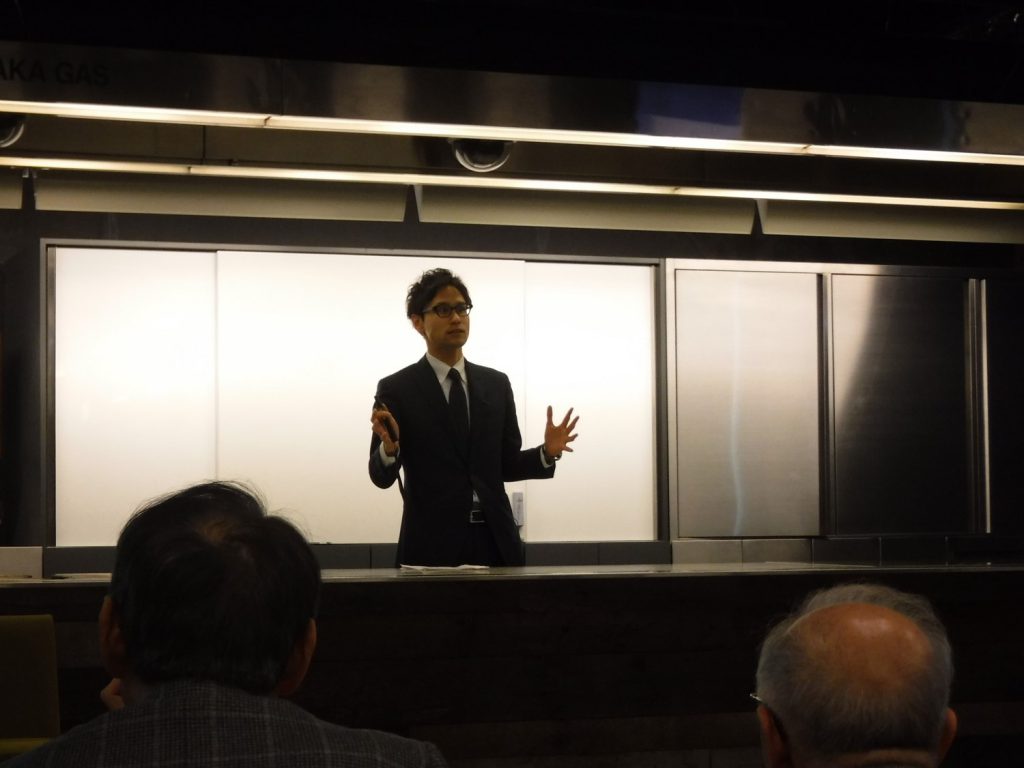
Mr. Tada, the Director of Products Development Division of Tada Seicha.
Tea Pairing with Various Foods and Beverages Including Alcohols.
Nowadays Japanese teas are used in various meals and confections.
Not only traditional Japanese meals so-called “Washoku”, multihued worldwide dishes and confections goes well with Japanese teas. It means both paring tea with cuisines and using Japanese teas as ingredient for meals. Lately the fact would accelerate restaurants and cafés to match their specialty dishes with Japanese teas.
In cafés, even in coffee chains such as STARBUCKS, there are several drinks containing Japanese teas such as matcha latte and Hojicha latte. Lately fancy bars serve some kinds of unique liquors containing Japanese teas. For example, Sencha gin tonic served in Kaneju Farm Omotesando, matcha beer in 1899, ‘Sun Rouge’ plum liquor in Sakurai Tea Roastery.
Surprisingly Gyokuro green tea could extremely go well with Sake, Mr. Tada introduced.
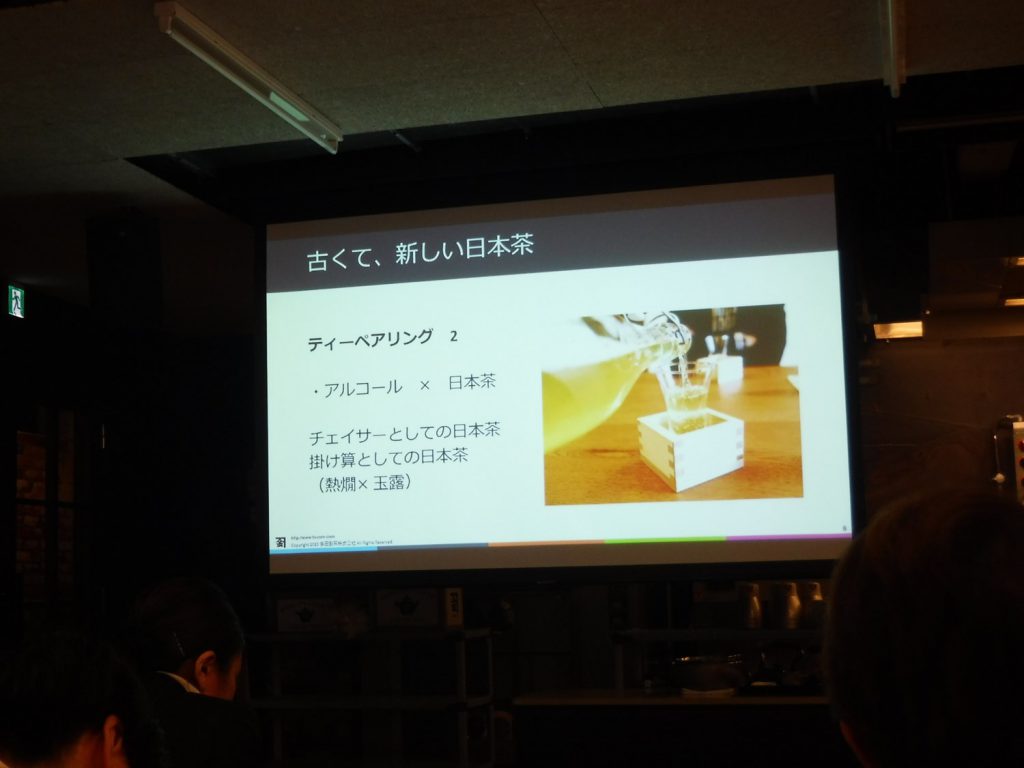
He tried some types of blending. As far as he tried, the hot Sake blended with Gyokuro infusion and the cold Sake blended with ice-brewed Gyokuro were very flavorful and preferred among his friends. He also explained specialty teas could be nice chasers when drinking alcohols.
Blending to meet the wide variety of customers’ demands
As a traditional tea company, Tada Seicha puts their significance and originality on the blending.
Ordinary tea companies play some roles on the domestic supply chain of Japanese tea in Japan, They act as blender, manufacture of final processing, supplier to other businesses, retailer etc. Especially blending is important to stabilize and optimize the quality and price of tea.
Not only for the purposes of the quality and price optimization, Mr. Tada thinks tea companies should blend to create distinctive flavors specific to certain occasions. Lately single-estate teas have gotten popular in Japan. Tea lovers demand for the uniqueness and higher quality of tea. For the demands, Mr. Tada aims to create original flavor that cannot be accomplished by single-estate tea, by combination of tea cultivars, tea estates and processing. He thinks the combination could have an infinite possibility.
He has tried to create the original flavor of tea by combination of tea estates, tea cultivars and processing methods. In 2018, he tried developing a new type of blended tea by the cooperation with some tea farmers in Kawane tea estate (Shizuoka pref.), Uji tea estate (Kyoto pref.) and Asamina tea estate (Shiga pref.). He blended Sencha of Koshun cultivar produced in Kawane and Asamiya tea estate with Sencha of Yabukita cultivar produced in Kawane, Uji and Asamiya tea estate.
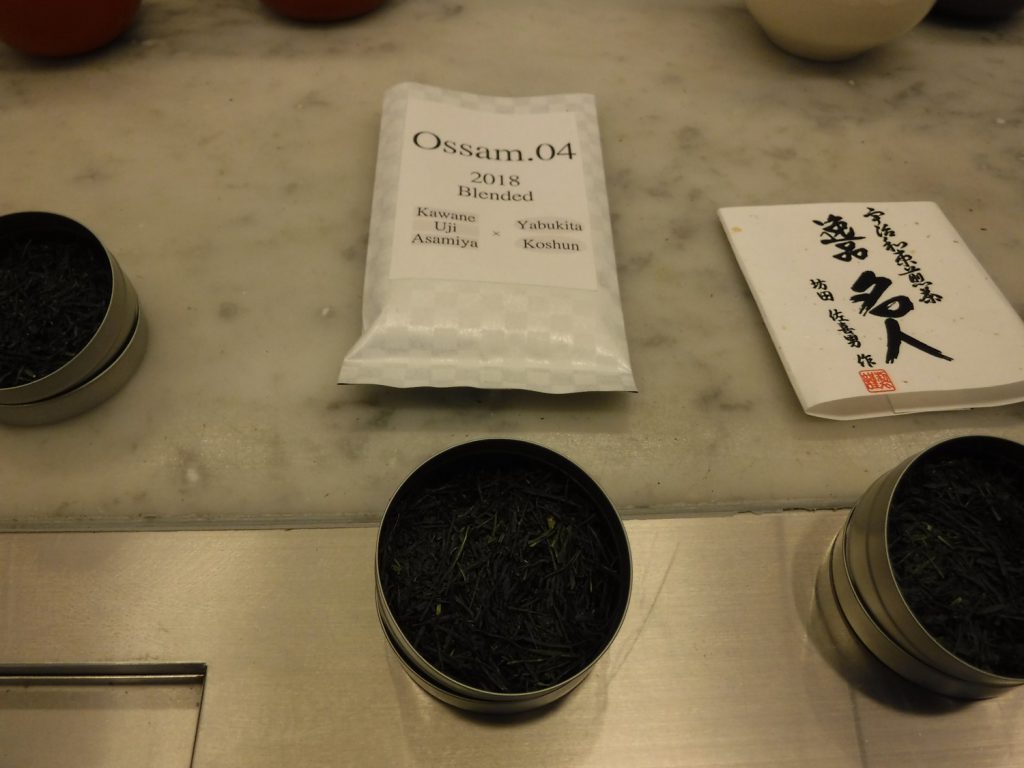
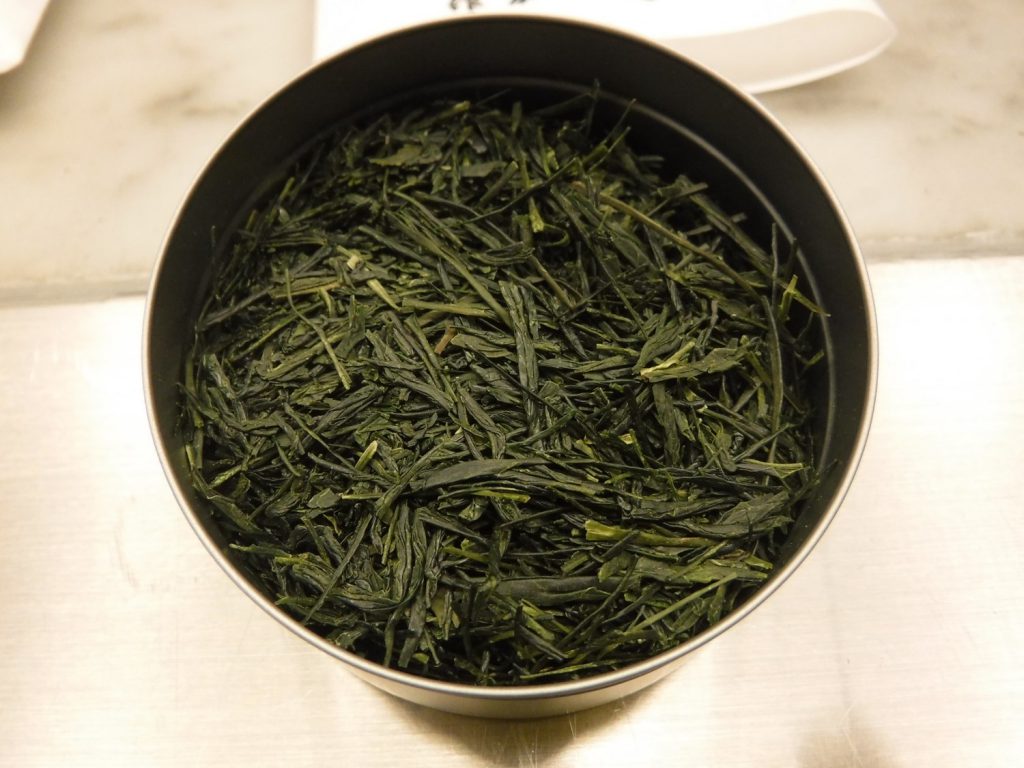
He served this special blended tea for visitors in the venue. Unfortunately I could not try the special blend because of the long queue for the tea, which would imply the special blend was so flavorful.
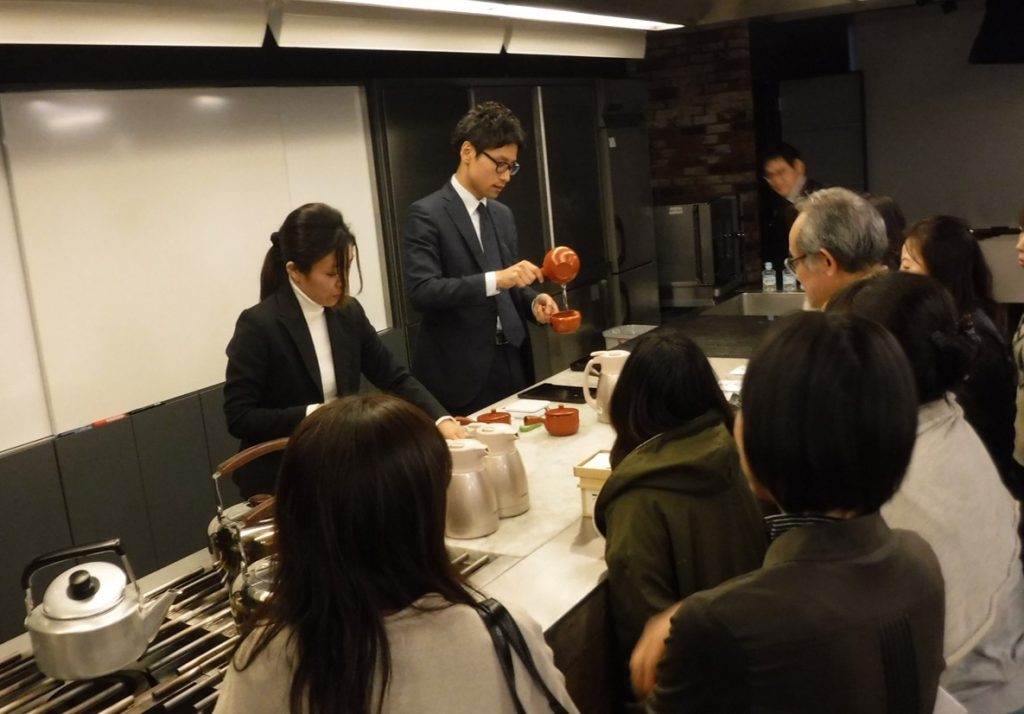
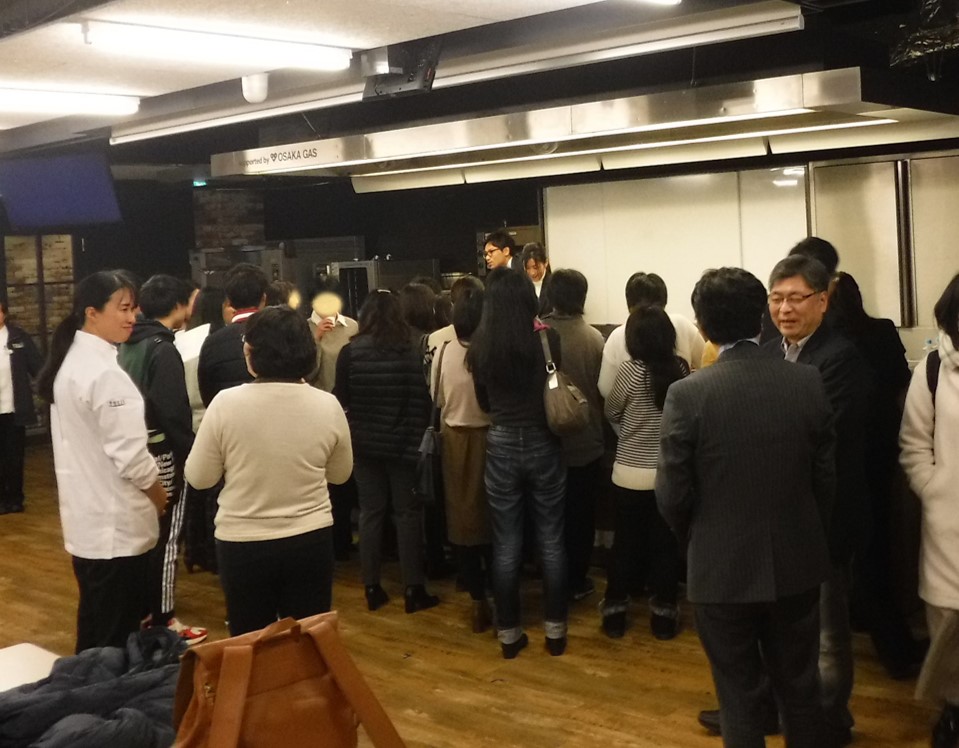
(2) Tea Pairing with French Cuisines presented by Mr. Nishimura
The owner chef of MAVO, Mr. Nishimura has a special sense of tasting. He can sense the flavors of teas as qualia of colors and shapes. And he memorize the flavors by drawing watercolor paintings. It could be synesthesia.
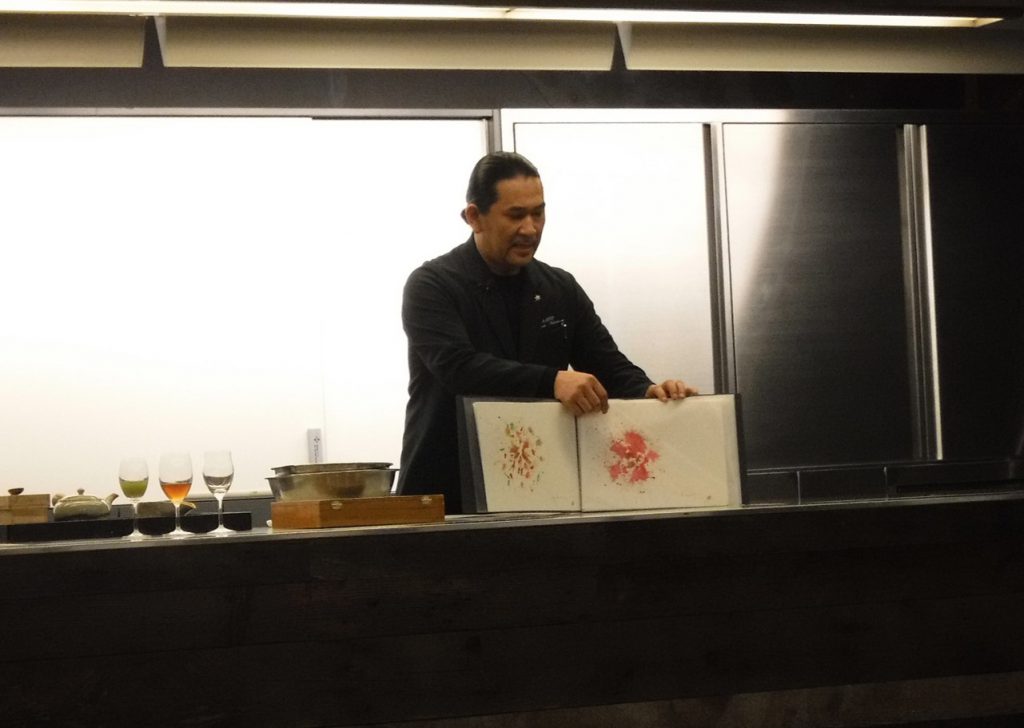
Mr. Nishimura explained his original recipe book where he memorizes the flavor of each blended tea by painting.
His special qualia can create diverse teas blended with various ingredients such as fruits, spices, beans, edible flowers, nuts etc. In the lecture, he demonstrated the blending hojicha with hibiscus, black mallow, cardamom, star anise, pineapple, celery and orange peel. The blending demonstration itself could be a sort of art as if an artist draws paintings.
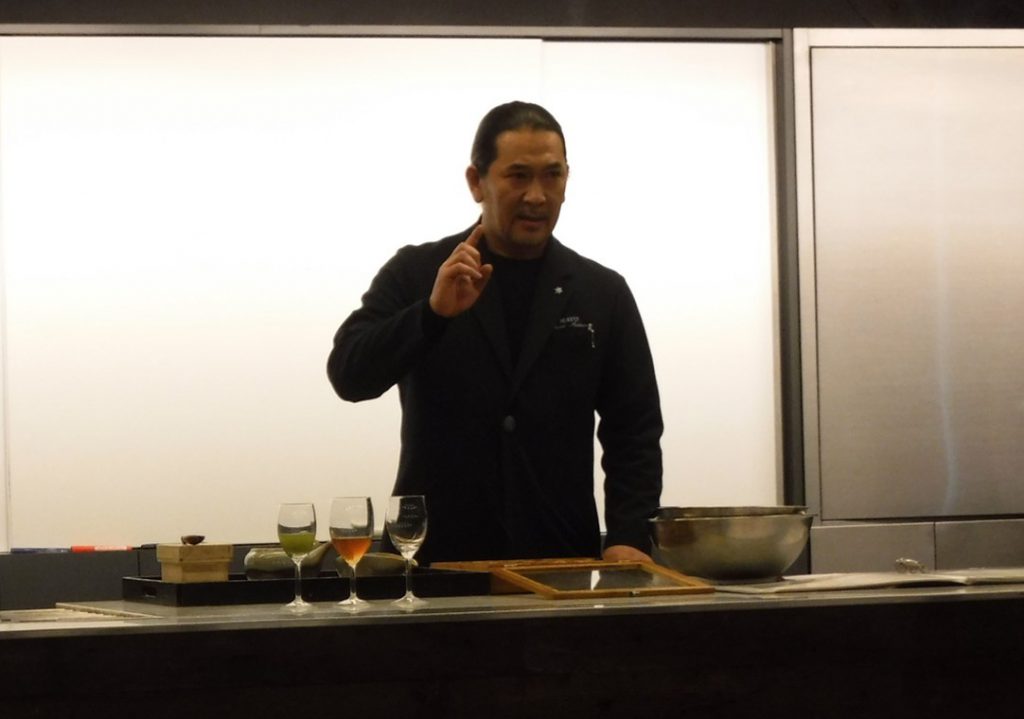
Mr. Nishimura explained his philosophy of tea blending for pairing with French cuisines.
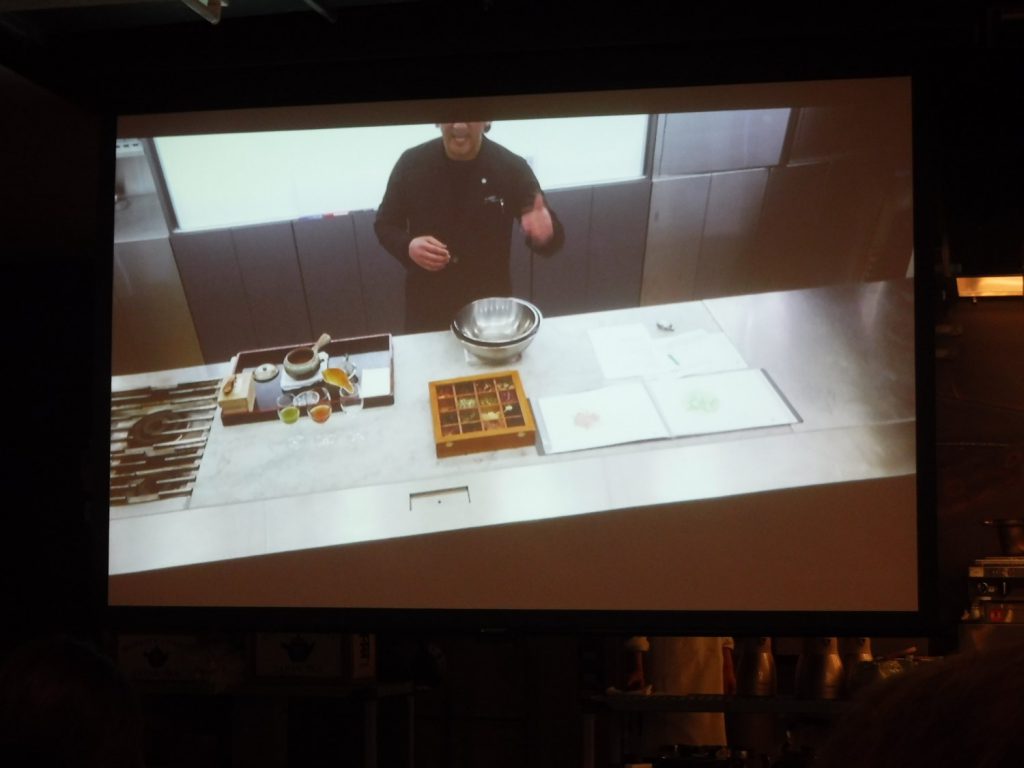
The excellent equipment of Ecole Tsuji showed the elegant movement of tea blending demonstrated by Mr. Nishimura on the monitor.
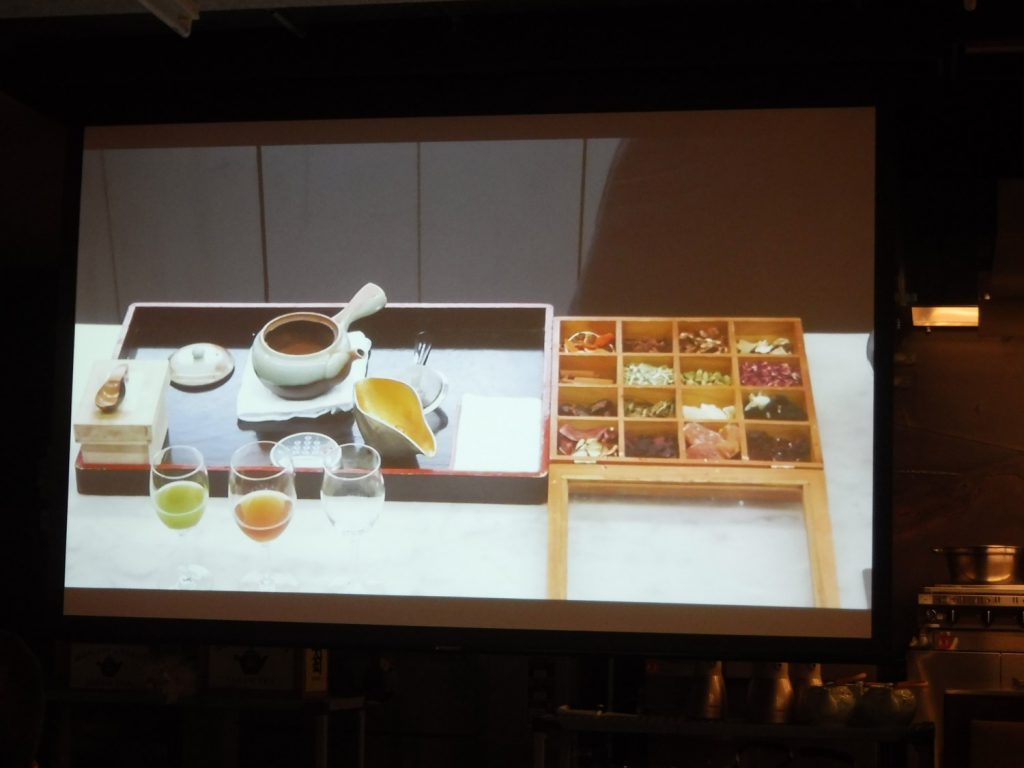
As well as the artists, he prepares the ingredients for tea blending in his original manner.
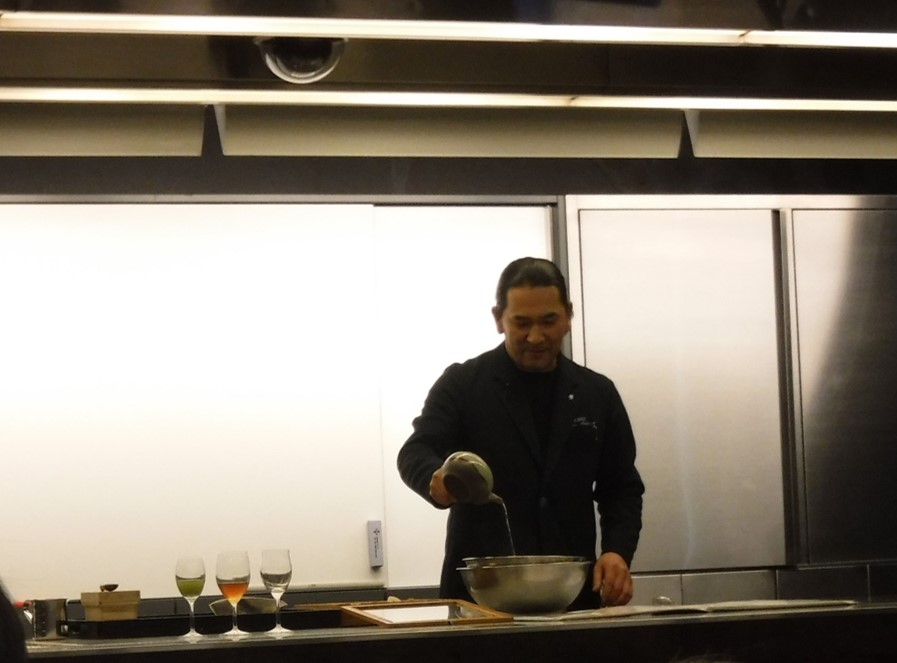
In the event, MAVO served three types of tea blended with multihued ingredients.
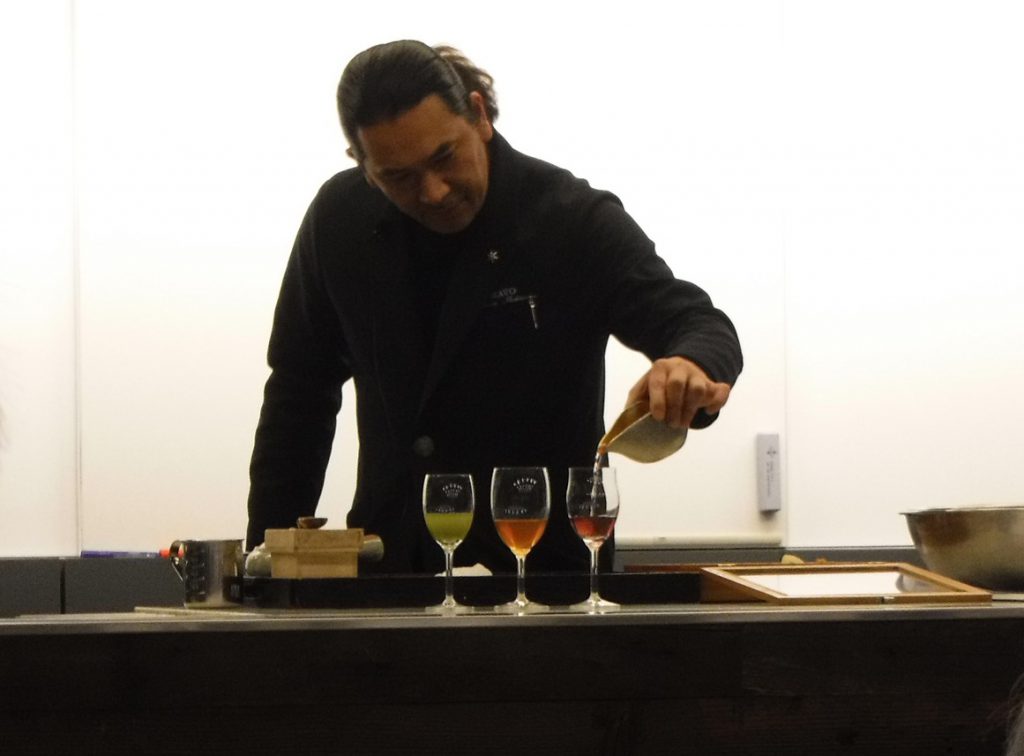
Mr. Nishimura explained that these blended tea themselves are not so excellent as “tea”. However, participants could be amazed by drinking them after eating some French cuisines prepared by MAVO. Paring the blended teas with French meals provided us with amazingly fantastic tastes!!
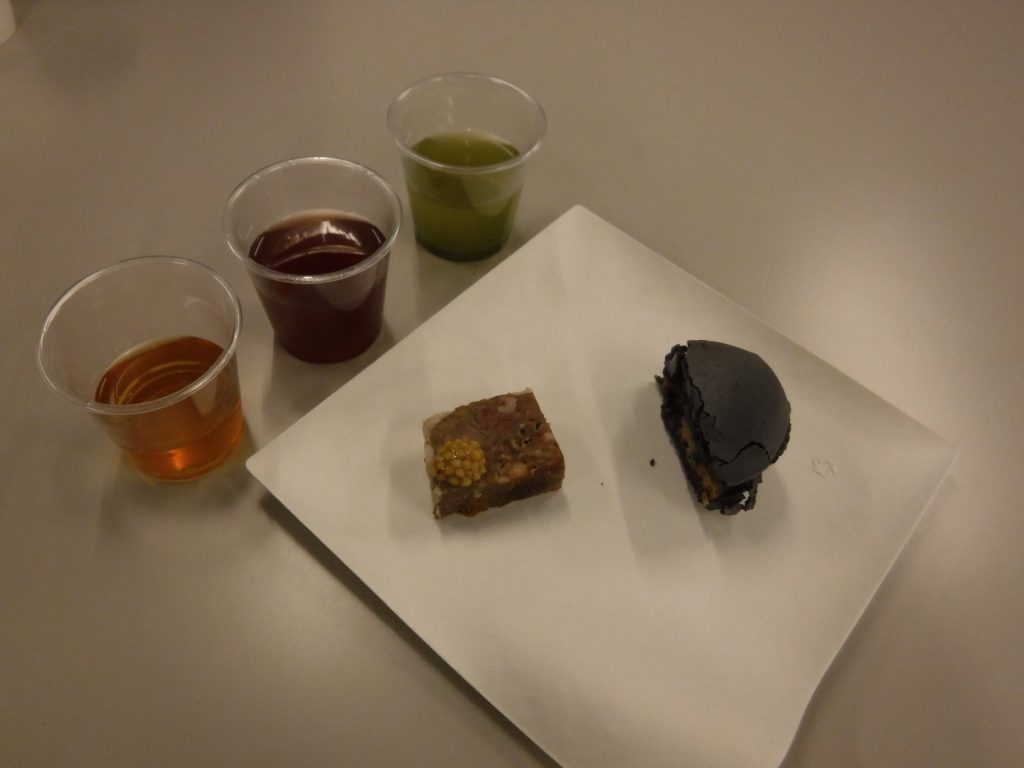
3 types of blended tea served for pairing with 2 appetizers prepared by MAVO.
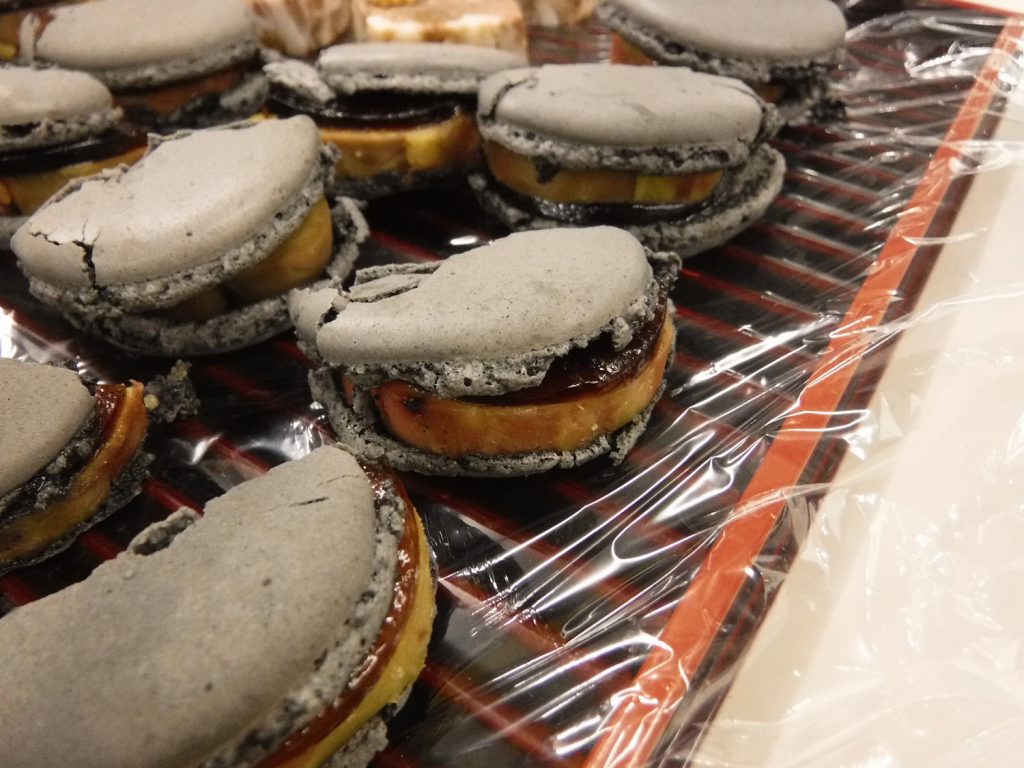
MAVO-made appetizer : Foie gras sandwiched with black macaron. In my opinion, the brown sauce topped on the slice of foie gras was so subtly tasty. The long mellow finish goes welll with the spice-blended hojicha.
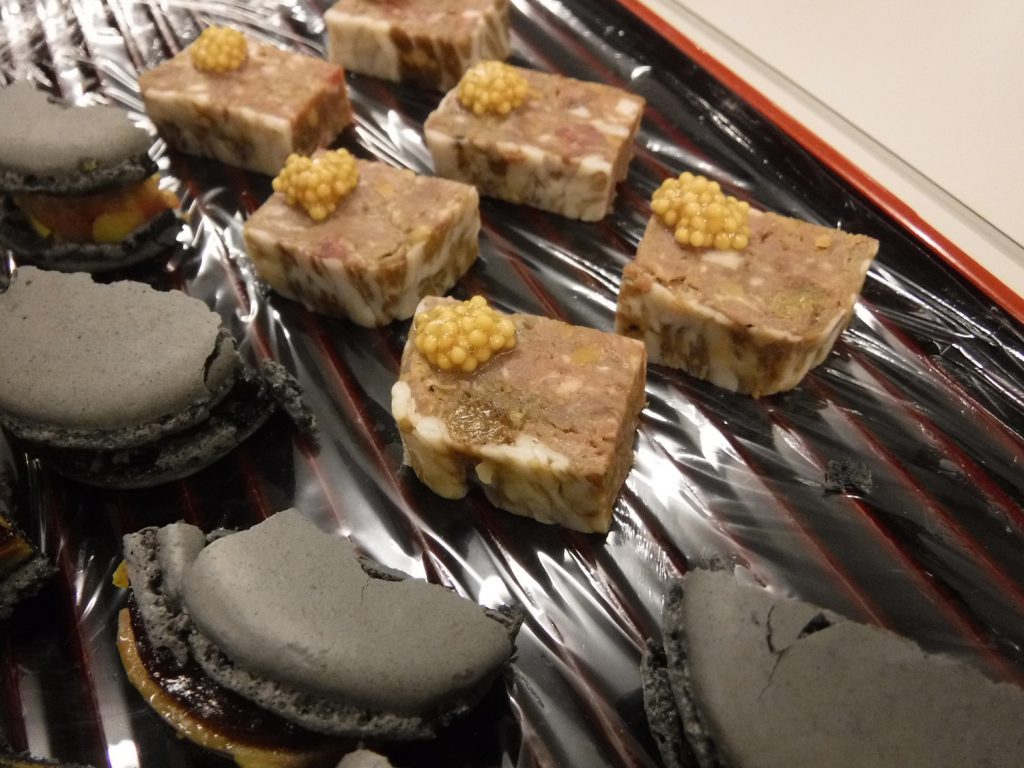 Of course, the special appetizers prepared by MAVO themselves were so subtly excellent, however, participants got shocked by the sips of the tea blended by Mr. Nishimura after eating the cuisines. The flavor and unique finish after sipping the blended tea were so amazingly tasty that I could not express them by language.
Of course, the special appetizers prepared by MAVO themselves were so subtly excellent, however, participants got shocked by the sips of the tea blended by Mr. Nishimura after eating the cuisines. The flavor and unique finish after sipping the blended tea were so amazingly tasty that I could not express them by language.
Thanks to MAVO, I could realize that tasting cuisines and teas is enjoying the qualia of the artists of culinary and tea. Although I could not explain by language, I could enjoy the qualia of Mr. Nishimura and Tada through their specialty cuisines and teas in this event business matching.
(3) Demands for “tailor-made” tea presented by Prof. Takeda
The president of Japanese Society of Tea Science & Technology, Prof. Takeda emphasized the importance of “tailor-made” teas. In order to meet the wide variety of customers’ needs, tea businesses including farmers, blenders, merchandizing companies should customize the flavor of teas corresponding to the various demands of customers. For this purpose, each actor should learn the properties of each tea cultivars produced in each tea estate.
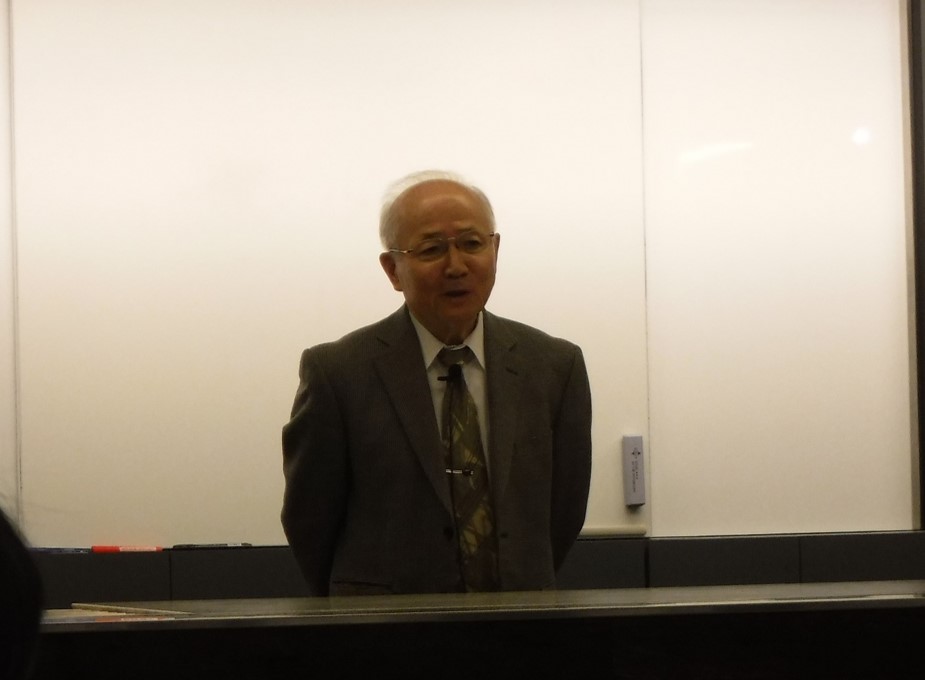
He also emphasized the processing method for example withering for aroma generation. In this event, he demonstrated oolong tea hand making, which involving maceration process after withering and kneading for enhancement of enzymatic aroma generation.
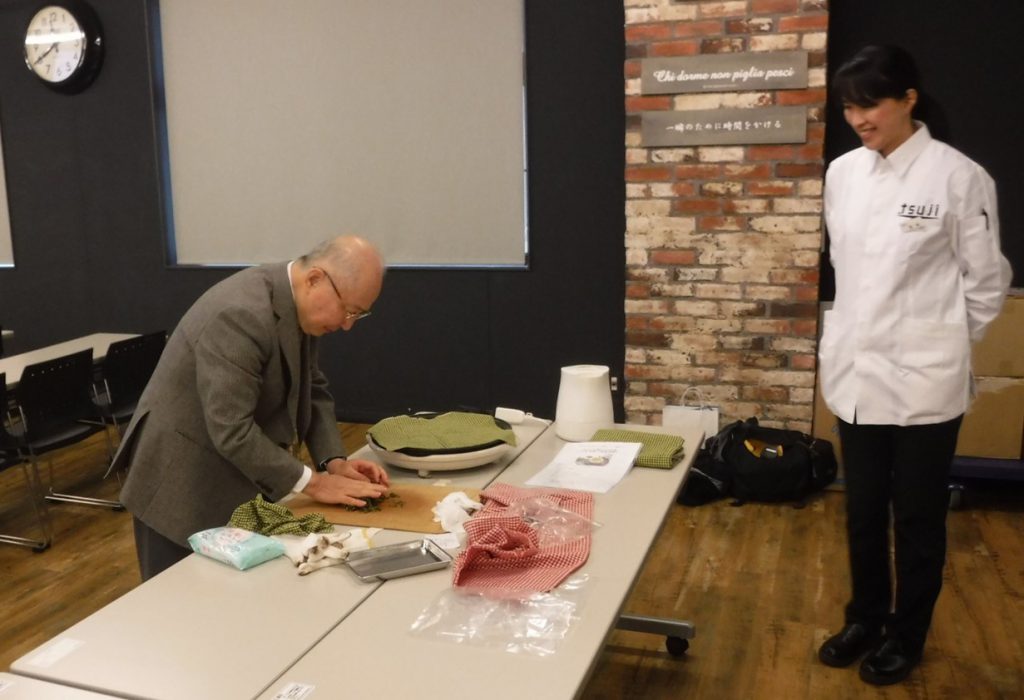
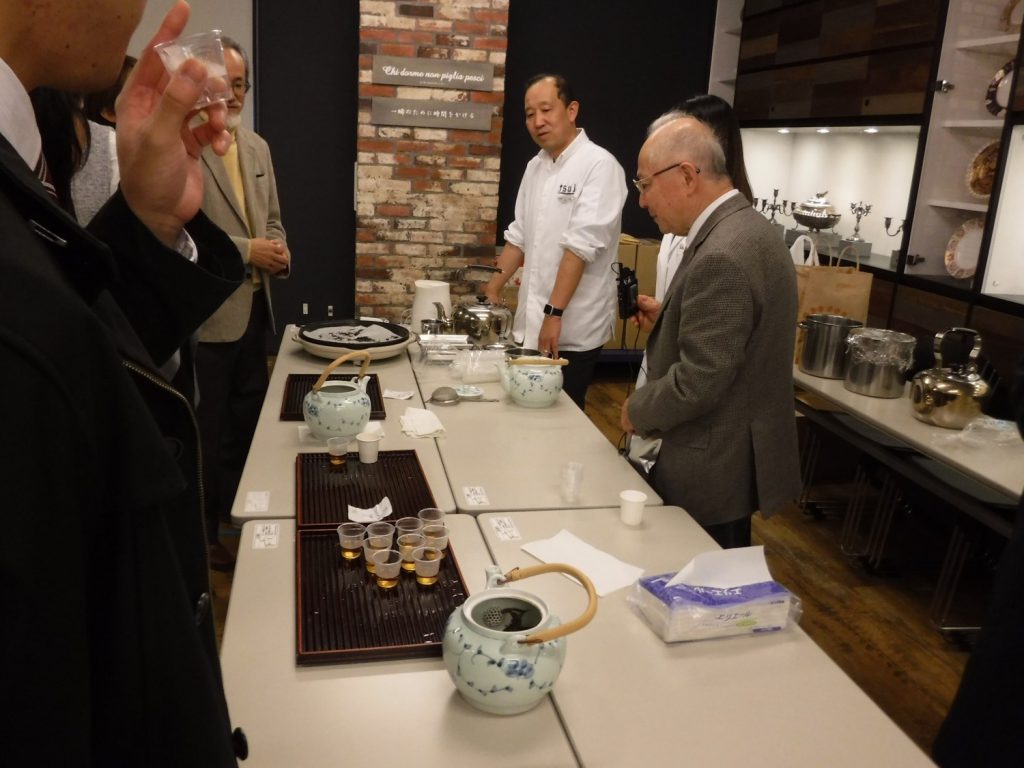
The Japanese Association of Tea Production will hold the next event business matching on 15th February in Tokyo as follows. If you are interested in “tea pairing”, it is recommended to join the event business matching.
In this event, the Chairperson and Executive Director of Royal Blue Tea Japan Co. Ltd., Mr. SATO Setsuo and the owner chef of French restaurant “L’Effervescence” Mr. IKUE Fuminobu will make presentations about the high grade bottled tea and tea pairing with French cuisines, respectively.
< Information of the next event business matching >
- Date : 13:00 – 16:00, 15th (Fri.) February.
- Venue : The first conference room on 5th floor in the COOP building
- Address : 1-1-12, Uchikanda, Chiyoda ward, Tokyo, Japan.
- Access : It takes approx. 5 minutes on foot from the A1 exit of Otemachi station on Tokyo Metro Marunouchi line and Hanzomon line or the C1 exit of Otemachi station on Tokyo Metro Chiyoda line.
- Fee : Free
- Registration : It is required to fill the application form in Japanese and send it to the office (03-5259-1177) by FAX.
